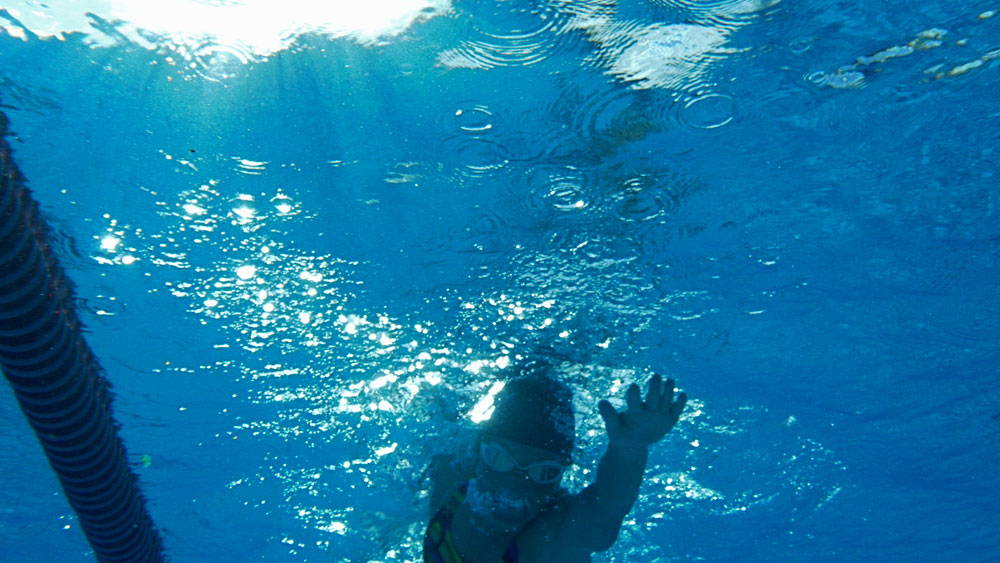Kraft und Ausdauer sind die beiden Komponenten, die jeder Triathlet braucht, um erfolgreich zu sein. Doch was ist eigentlich die sogenannte Kraftausdauer und wie trainiert man sie? triathlon.de erklärt euch, wie’s geht.
In den meisten Ausdauersportarten findet man in Trainingsbüchern und Trainingsempfehlungen das sportartspezifische Kraftausdauertraining als wichtigen Trainingsbestandteil wieder. In der Praxis werden zum Training der „Kraftausdauer“ erhöhte Widerstände wie Schwimmen mit Paddels, Radfahren mit hoher Übersetzung oder Bergläufe durchgeführt. Die Gesamttrainingsdauer liegt meist zwischen 15 bis 120 Minuten, wobei die Intensität unter oder im Bereich der anaeroben Schwelle liegt.
Begriff der Kraftausdauer
In der Sportwissenschaft wird Kraftausdauer als Ermüdungswiderstandfähigkeit bei lang andauernden Kraftbelastungen definiert. Laut Definition liegt die Belastungsdauer bei maximal zwei Minuten. Außerdem müssen mindestens 30 bis 50 Prozent der Maximalkraft eingesetzt werden, um einen entsprechenden Trainingsreiz zu setzen. Vergleicht man die Trainingspraxis in den Ausdauersportarten mit den wissenschaftlichen Empfehlungen zum Kraftausdauertraining, sind diese nicht in Einklang zu bringen. Es handelt sich im Grunde um zwei völlig verschiedene Trainingsformen, insbesondere da beim sportartspezifischen Kraftausdauertraining bei Weitem nicht die notwendigen 30 bis 50 Prozent der Maximalkraft erreicht werden. Beim Schwimmen mit Paddels oder Radfahren mit hohen Gängen handelt sich also nicht um ein Kraftausdauertraining, sondern eher um ein kraftorientiertes Ausdauertraining.
Kraftausdauer: Zwei Komponenten
In wissenschaftlichen Kreisen wird seit einigen Jahren über Sinn und Unsinn dieser Trainingsform im Ausdauersport diskutiert. Die Studienlage zu diesem Thema ist noch spärlich. Relativ klar ist jedoch, dass durch ein sportartspezifisches Training – wie oben beschrieben – keine Verbesserung der Kraftfähigkeiten zu erwarten ist, da die Belastung deutlich zu niedrig ist. Die Kraft kann also nur mit entsprechendem Training an Geräten trainiert werden. Um die Kraftausdauer, also die Ermüdungswiderstandsfähigkeit bei lang andauernden (Kraft-)Belastungen zu trainieren, muss diese nach Sandig & Wirth (2011) in zwei Komponenten aufgeteilt werden. Ein klassisches Krafttraining, vor allem zur Verbesserung der Maximalkraft, führt zur Verbesserung der Kraftkomponente und ein klassisches Ausdauertraining zur Verbesserung der Ausdauerkomponente.
Training: Kraft und Ausdauer trennen
Offen bleibt die Frage, welchen Trainingsreiz das bisher in der Trainingspraxis durchgeführte sportartspezifische Kraftausdauertraining darstellt und ob sich dadurch Verbesserungen in der Wettkampfleistung erzielen lassen, die über denen eines klassischen Ausdauertrainings liegen.
Erfahrene Trainer scheinen hier einen Effekt zu sehen, da sich diese Trainingsform in der Praxis durchaus häufig in Trainingsplänen wiederfinden lässt. Wissenschaftliche Untersuchungen dazu fehlen jedoch. Zum Beispiel müsste der Trainingseffekt nach mehreren Wochen mit Radtraining in unterschiedlichen Trittfrequenz-Bereichen verglichen werden. Für die Trainingspraxis bleibt wegen der aktuell spärlichen wissenschaftlichen Studienlage nur die Empfehlung, das Training gerade in der Saisonvorbereitungsphase mehr in die klassischen Bereiche Kraft und Ausdauer zu unterteilen und diese getrennt zu trainieren. So kann ein effektiver Trainingsreiz in beiden Bereichen gesetzt werden. Im Ausdauertraining ist es zusätzlich wichtig, in unterschiedlichen Frequenzbereichen zu trainieren, gerade wenn die Wettkampfstrecke wie eine hügelige Radstrecke diese Anforderungen stellt.
Eine Beispieleinheit auf dem Rad zur Verbesserung der Trittfrequenzvariabilität könnte wie folgt aussehen: 10 x 3 Minuten mit hoher (> 110 U/min) und niedriger (60-80 U/min) Trittfrequenz im Wechsel; Intensität sowohl im Grundlagen- als auch im wettkampfspezifischen Training möglich.




















